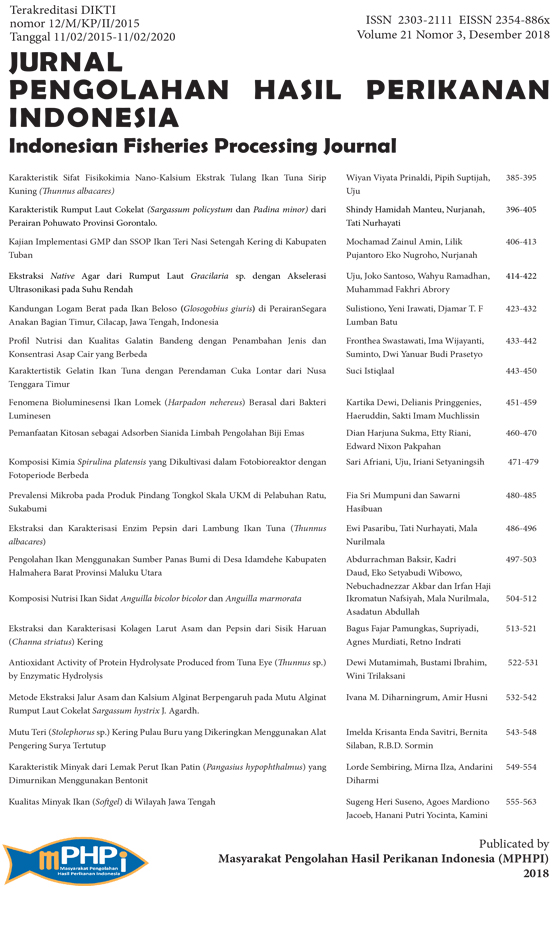Acid and calcium alginate extraction method affected the quality of alginate from brown seaweed Sargasum hystrix J. Agardh
Abstract
Seaweed is one of the marine biological resources of Indonesia that has a high potential to produce alginate, however, the most appropiate method to extract the alginate of high quality is still unknown. This study was aimed to determine the effects of extraction methods on the quality of alginate from seaweed Sargassum hystrix and compared the extraction cost. Two extraction methods were used in this study including acidic and calcium method. The yield, moisture content, viscosity, pH, whiteness degree, functional group, ash content and extraction cost were evaluated. The viscosity and whiteness degree of sodium alginate from acidic method was 126.00±7.21 cPs and 75.27±0.58 cPs, respectively. Meanwhile the calcium method produced sodium alginate with viscosity 7.23±1.50 cPs and whiteness degree 68.95±0.18 cPs. The yield, moisture content, and ash content of alginate produced by acidic method were lower compare to that of produced by calcium method. Cost analysis showed the acidic method required higher cost. Nevertheless, these resultssuggest that acidic method produce alginate with better quality than the calcium method.
Authors
DiharningrumI. M., & HusniA. (2018). Acid and calcium alginate extraction method affected the quality of alginate from brown seaweed Sargasum hystrix J. Agardh. Jurnal Pengolahan Hasil Perikanan Indonesia, 21(3), 532-542. https://doi.org/10.17844/jphpi.v21i3.24737
Authors who publish with this journal agree to the following terms:
- Authors retain copyright and grant the journal right of first publication with the work simultaneously licensed under a Creative Commons Attribution License that allows others to share the work with an acknowledgement of the work's authorship and initial publication in this journal.
- Authors are able to enter into separate, additional contractual arrangements for the non-exclusive distribution of the journal's published version of the work (e.g., post it to an institutional repository or publish it in a book), with an acknowledgement of its initial publication in this journal.





